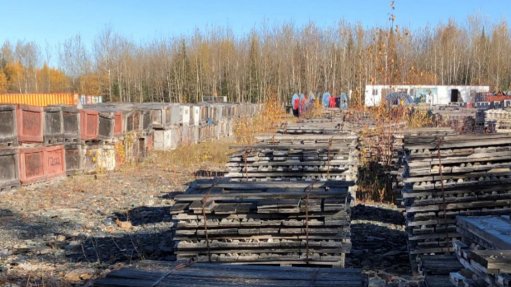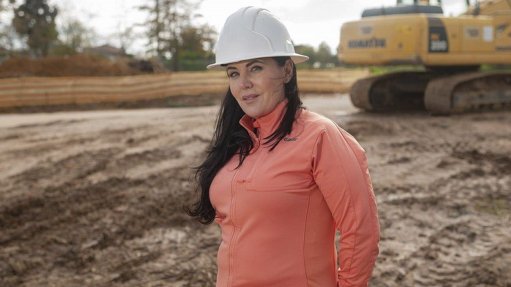Opinion: The MPRDA and its impact on future mining investments in South Africa
In this article, Webber Wentzel partner Bruce Dickinson writes that the implications of the Mineral and Petroleum Resources Development Act (MPRDA) on investment dynamics in South Africa have come under scrutiny.
The introduction of the MPRDA in 2004 marked a transformative shift in South Africa's mining landscape. This pivotal legislation redefined mineral resource management, transferring mineral rights from private entities to state custodianship. Its goal was to facilitate equitable access and redistribute mineral wealth. However, two decades later, as global mining companies eye significant acquisitions in the region, the implications of the MPRDA on investment dynamics have come under renewed scrutiny.
The MPRDA was a cornerstone of South Africa’s post-apartheid economic strategy, embedding black economic empowerment (BEE) requirements to rectify historical imbalances. While this led to increased local participation in mining, it introduced complexities for foreign investors, who now had to navigate these new partnership and ownership paradigms. This regulation, designed to boost social equity, inadvertently injected a degree of investor caution due to the perceived risks and costs associated with compliance and potential policy shifts.
Environmental and social governance (ESG) standards also took centre stage under the MPRDA, mandating stringent adherence to sustainable mining practices. These provisions were forward-thinking at inception, aligning South Africa with global shifts towards environmental conservation and community welfare in mining operations. While the MPRDA's emphasis on ESG has demonstrably improved environmental practices and community welfare, the associated compliance and operational hurdles have been a double-edged sword - raising the bar for environmental and community stewardship while potentially deterring all but the most committed investors from entering the market.
Looking at the landscape as it has evolved over a number of years, and the strategies employed by global mining companies highlights the dichotomy: spinning off South African assets to mitigate risks associated with local operations. This strategy underscores a cautious approach towards the complexities introduced by the MPRDA. Such moves might be seen as a bid to secure value and streamline operations without inheriting the intricate web of regulatory and social obligations tied to South African assets.
This scenario begs a larger question about the future of mining investment in South Africa: Does the MPRDA framework support the kind of environment that attracts large-scale, foreign investment? While it has undeniably fostered a more equitable industry, the act’s implications for operational certainty and investment appeal cannot be overlooked. Investors seek stable, predictable, and competitive regulatory regimes. The ongoing amendments and debates surrounding the MPRDA suggest a regulatory environment in flux, unsettling investors.
However, this is not to say that the MPRDA is without merit. The act’s emphasis on social and environmental responsibilities should be viewed as a strength in an era where ESG factors significantly influence investment decisions. The key challenge for South Africa will be to refine the act to balance investor needs with national interests.
For South Africa to attract mining investment, the lessons gleaned from the MPRDA's impact and the strategic considerations of global mining companies will be crucial. The country's ability to adapt its regulations to foster both local development and global competitiveness will dictate the future landscape of mining investments. Balancing these will determine whether South Africa can regain its status as a top mining destination while honouring its commitment to social and environmental stewardship.
This nuanced navigation between global investment practices and local socioeconomic development goals will define the next chapter of South Africa's mining industry – a chapter that all stakeholders in the mining industry should help author.
Comments
Press Office
Announcements
What's On
Subscribe to improve your user experience...
Option 1 (equivalent of R125 a month):
Receive a weekly copy of Creamer Media's Engineering News & Mining Weekly magazine
(print copy for those in South Africa and e-magazine for those outside of South Africa)
Receive daily email newsletters
Access to full search results
Access archive of magazine back copies
Access to Projects in Progress
Access to ONE Research Report of your choice in PDF format
Option 2 (equivalent of R375 a month):
All benefits from Option 1
PLUS
Access to Creamer Media's Research Channel Africa for ALL Research Reports, in PDF format, on various industrial and mining sectors
including Electricity; Water; Energy Transition; Hydrogen; Roads, Rail and Ports; Coal; Gold; Platinum; Battery Metals; etc.
Already a subscriber?
Forgotten your password?
Receive weekly copy of Creamer Media's Engineering News & Mining Weekly magazine (print copy for those in South Africa and e-magazine for those outside of South Africa)
➕
Recieve daily email newsletters
➕
Access to full search results
➕
Access archive of magazine back copies
➕
Access to Projects in Progress
➕
Access to ONE Research Report of your choice in PDF format
RESEARCH CHANNEL AFRICA
R4500 (equivalent of R375 a month)
SUBSCRIBEAll benefits from Option 1
➕
Access to Creamer Media's Research Channel Africa for ALL Research Reports on various industrial and mining sectors, in PDF format, including on:
Electricity
➕
Water
➕
Energy Transition
➕
Hydrogen
➕
Roads, Rail and Ports
➕
Coal
➕
Gold
➕
Platinum
➕
Battery Metals
➕
etc.
Receive all benefits from Option 1 or Option 2 delivered to numerous people at your company
➕
Multiple User names and Passwords for simultaneous log-ins
➕
Intranet integration access to all in your organisation




















